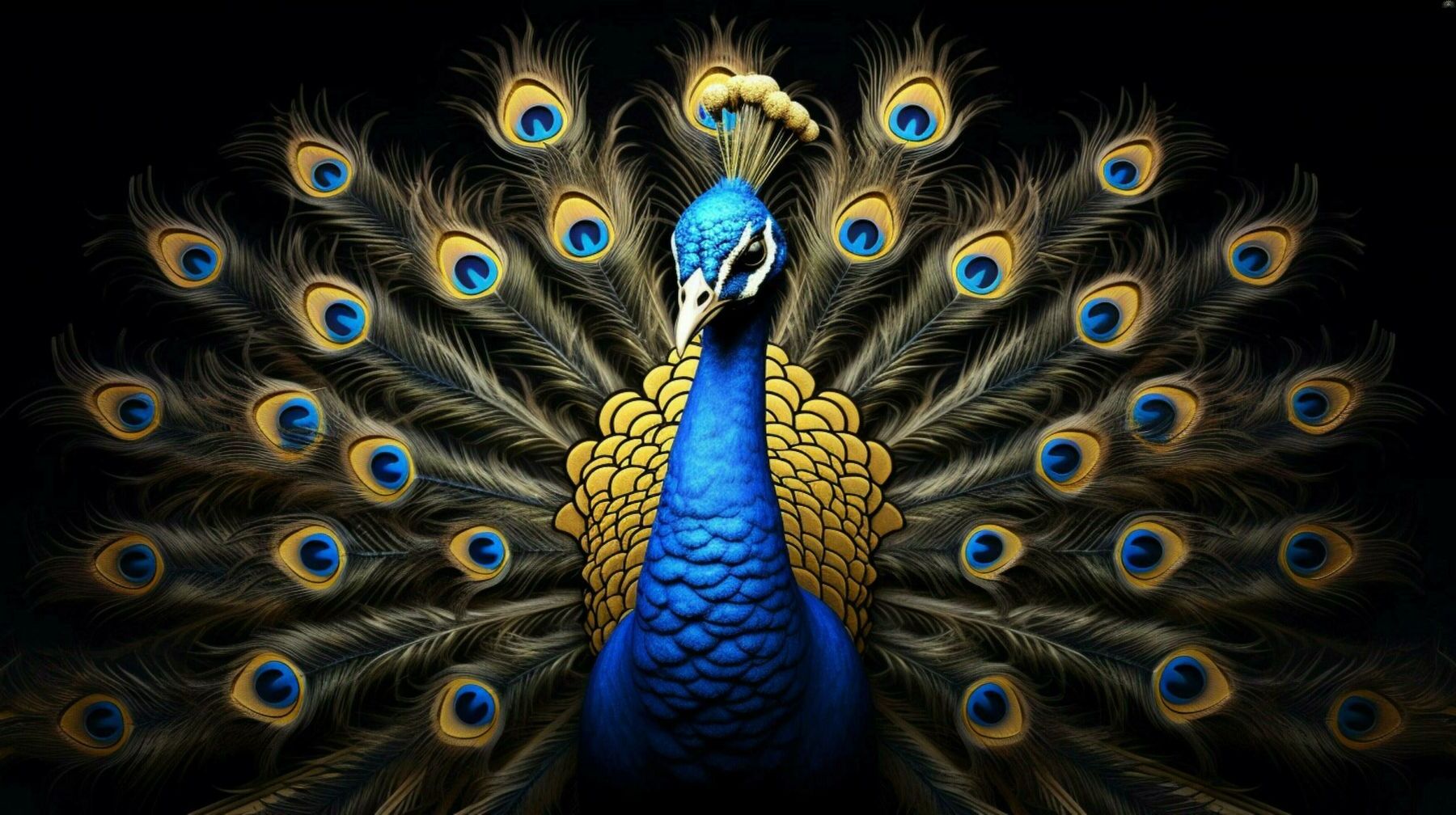
Did you know that the blue peacock, also known as the Indian peafowl, is one of the most stunning birds on the planet? These majestic creatures are famous for their vibrant plumage and mesmerizing courtship displays. Found mainly in India and Sri Lanka, blue peacocks have fascinated humans for centuries with their beauty and grace. But there's more to these birds than just their looks. From their unique calls to their surprising behaviors, blue peacocks are full of intriguing facts that might surprise you. Ready to learn more about these incredible birds? Let's dive into 35 fascinating facts about blue peacocks that will leave you in awe.
Key Takeaways:
- The blue peacock, with its stunning feathers and elaborate courtship displays, is a social bird that thrives in various habitats. It holds cultural significance and faces conservation challenges.
- Despite its beauty, the blue peacock faces threats from habitat loss and illegal hunting. Conservation efforts are crucial to ensure its survival in the wild.
The Majestic Blue Peacock
The blue peacock, also known as the Indian peafowl, is one of the most stunning birds in the world. Known for its vibrant plumage and elaborate courtship displays, this bird has fascinated humans for centuries. Let's dive into some intriguing facts about this magnificent creature.
Physical Characteristics
The blue peacock's appearance is nothing short of spectacular. Its vivid colors and unique features make it a standout in the animal kingdom.
- The male blue peacock boasts a dazzling train of feathers that can reach up to 6 feet in length.
- These feathers are not actually blue; they appear blue due to microscopic structures that reflect light.
- Each feather in the train has an eye-like pattern called an ocellus, which helps attract mates.
- Female peafowls, known as peahens, are less colorful, sporting brown and gray feathers for camouflage.
- Peacocks have a crest of feathers on their heads, adding to their regal appearance.
Habitat and Distribution
Blue peacocks are native to the Indian subcontinent but can be found in various parts of the world today.
- They thrive in deciduous forests, scrublands, and grasslands.
- Peacocks are also commonly found near human settlements, including farms and villages.
- They have been introduced to countries like the United States, Australia, and New Zealand.
- In India, the blue peacock is the national bird, symbolizing grace and beauty.
- These birds prefer habitats with plenty of cover and water sources.
Behavior and Social Structure
Understanding the behavior of blue peacocks can provide insight into their social dynamics and survival strategies.
- Peacocks are social birds, often found in small groups called parties.
- Males are territorial and will defend their area from other males.
- During the breeding season, males perform elaborate courtship displays to attract females.
- These displays involve fanning out their train feathers and shaking them to create a rustling sound.
- Peacocks are ground feeders, primarily eating seeds, insects, and small reptiles.
Reproduction and Lifespan
The reproductive habits of blue peacocks are as fascinating as their appearance.
- Peahens lay between 3 to 5 eggs per clutch.
- The eggs are incubated for about 28 days before hatching.
- Chicks are precocial, meaning they are relatively mature and mobile shortly after hatching.
- Peacocks reach sexual maturity at around 2 to 3 years of age.
- In the wild, blue peacocks can live up to 20 years, while in captivity, they may live even longer.
Cultural Significance
Blue peacocks hold a special place in various cultures and traditions around the world.
- In Hindu mythology, the peacock is associated with the god Kartikeya and the goddess Saraswati.
- Peacocks are often depicted in Indian art, dance, and literature.
- The bird is a symbol of immortality and renewal in many cultures.
- In ancient Greece, the peacock was sacred to Hera, the queen of the gods.
- Peacocks are also featured in Persian poetry and art, symbolizing beauty and dignity.
Conservation Status
Despite their beauty, blue peacocks face several threats in the wild.
- Habitat loss due to deforestation and urbanization is a significant threat.
- Illegal hunting for their feathers and meat also poses a risk.
- Conservation efforts in India have helped stabilize their population.
- The blue peacock is listed as a species of "Least Concern" by the IUCN, but continuous monitoring is essential.
- Protected areas and wildlife sanctuaries play a crucial role in their conservation.
Fun and Lesser-Known Facts
Here are some fun and lesser-known tidbits about blue peacocks that might surprise you.
- Peacocks can fly short distances despite their heavy train feathers.
- They have a loud, distinctive call that can be heard over long distances.
- Peacocks are known to eat poisonous snakes, showcasing their bravery.
- The bird's scientific name, Pavo cristatus, means "crested peafowl."
- Peacocks have been kept as pets and ornamental birds for thousands of years, dating back to ancient civilizations.
The Final Feather
Blue peacocks are truly fascinating creatures. Their vibrant plumage, unique behaviors, and cultural significance make them stand out in the animal kingdom. From their stunning tail displays to their loud calls, these birds never fail to capture attention. They play important roles in ecosystems by controlling insect populations and spreading seeds.
Peacocks also hold a special place in various cultures and religions, symbolizing beauty, immortality, and pride. Understanding these facts helps us appreciate their importance and the need to protect their habitats.
Next time you see a blue peacock, remember the incredible traits and stories behind those dazzling feathers. Whether in the wild or a garden, these birds remind us of nature's wonders and the intricate connections within our world. Keep exploring and learning about the amazing creatures sharing our planet.
Frequently Asked Questions
Was this page helpful?
Our commitment to delivering trustworthy and engaging content is at the heart of what we do. Each fact on our site is contributed by real users like you, bringing a wealth of diverse insights and information. To ensure the highest standards of accuracy and reliability, our dedicated editors meticulously review each submission. This process guarantees that the facts we share are not only fascinating but also credible. Trust in our commitment to quality and authenticity as you explore and learn with us.


